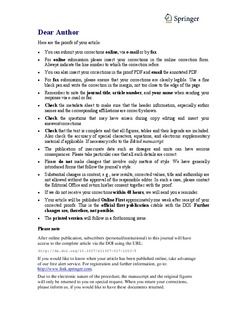| dc.contributor.author | Lillesund, Vilde Fluge | |
| dc.contributor.author | Hagen, Dagmar | |
| dc.contributor.author | Michelsen, Ottar | |
| dc.contributor.author | Foldvik, Anders | |
| dc.contributor.author | Barton, David Nicholas | |
| dc.coverage.spatial | Southern Norway | nb_NO |
| dc.date.accessioned | 2017-05-23T13:02:52Z | |
| dc.date.available | 2017-05-23T13:02:52Z | |
| dc.date.created | 2017-03-03T10:03:02Z | |
| dc.date.issued | 2017 | |
| dc.identifier.issn | 0948-3349 | |
| dc.identifier.uri | http://hdl.handle.net/11250/2443349 | |
| dc.description.abstract | Purpose Habitat destruction is today the most severe threat to global biodiversity. Despite decades of efforts, there is still no proper methodology on how to assess all aspects of impacts on biodiversity from land use and land use changes (LULUC) in life cycle analysis (LCA). A majority of LCA studies on land extensive activities still do not include LULUC. In this study, we test different approaches for assessing the impact of land use and land use change related to hydropower for use in LCA and introduce restoration cost as a new approach. Methods We assessed four hydropower plant projects in planning phase (two upgrading plants with reservoir and two new run-of-river plants) in Southern Norway with comparable geography, biodiversity, and annual energy production capacity. LULUC was calculated for each habitat type, based on mapping of present and future land use, and was further allocated to energy production for each power plant. Three different approaches to assess land use impact were included: ecosystem scarcity/vulnerability, biogenic greenhouse gas (bGHG)emissions, and the cost of restoring affected habitats. Restoration cost represents a novel approach to LCA for measuring impact of LULUC. Results and discussion Overall, the three approaches give similar rankings of impacts: larger impact for small and new power plants and less for larger and expanding existing plants. Reservoirs caused a larger total area affected. Permanent infrastructure has a more similar absolute impact for run-of-river and reservoir-based hydropower, and consequently give relatively larger impact for smaller run-of-river hydropower. All approaches reveal impacts on wetland ecosystems as most important relative to other ecosystems. The methods used for all three approaches would benefit from higher resolution data on land use, habitats, and soil types. Total restoration cost is not accurate, due to uncertainty of offset ratios, but relative restoration costs may still be used to rank restoration alternatives and compare them to the costs of biodiversity offsets. Conclusions The different approaches assess different aspects of land use impacts, but they all show large variation of impact between the studied hydropower plants, which shows the importance of including LULUC in LCA for hydropower projects. Improved data of total restoration cost (and cost accounting) are needed to implement this approach in future LCA. bGHGemission . Ecosystemscarcity/ vulnerability . Land use change impact . Life cycle assessment (LCA) . Mitigation hierarchy . Restoration cost | nb_NO |
| dc.language.iso | eng | nb_NO |
| dc.subject | bGHGemission | nb_NO |
| dc.subject | Ecosystem scarcity/vulnerability | nb_NO |
| dc.subject | Land use change impact | nb_NO |
| dc.subject | Life cycle assessment (LCA) | nb_NO |
| dc.subject | Mitigation hierarchy | nb_NO |
| dc.subject | Restoration cost | nb_NO |
| dc.title | Comparing land use impacts using ecosystem quality, biogenic carbon emissions, and restoration costs in a case study of hydropower plants in Norway | nb_NO |
| dc.type | Journal article | nb_NO |
| dc.type | Peer reviewed | nb_NO |
| dc.subject.nsi | VDP::Basale biofag: 470 | nb_NO |
| dc.subject.nsi | VDP::Basic biosciences: 470 | nb_NO |
| dc.source.journal | The International Journal of Life Cycle Assessment | nb_NO |
| dc.identifier.doi | 10.1007/s11367-017-1263-5 | |
| dc.identifier.cristin | 1455549 | |
| dc.relation.project | Norges forskningsråd: 215934 | nb_NO |
| cristin.unitcode | 7511,2,0,0 | |
| cristin.unitcode | 7511,3,0,0 | |
| cristin.unitcode | 7511,6,0,0 | |
| cristin.unitname | Avdeling for terrestrisk økologi | |
| cristin.unitname | Avdeling for akvatisk økologi | |
| cristin.unitname | Oslo | |
| cristin.ispublished | true | |
| cristin.fulltext | postprint | |
| cristin.qualitycode | 2 | |
